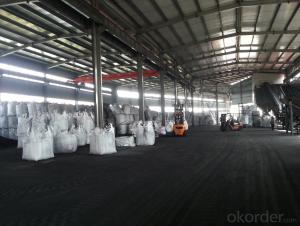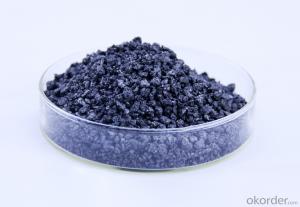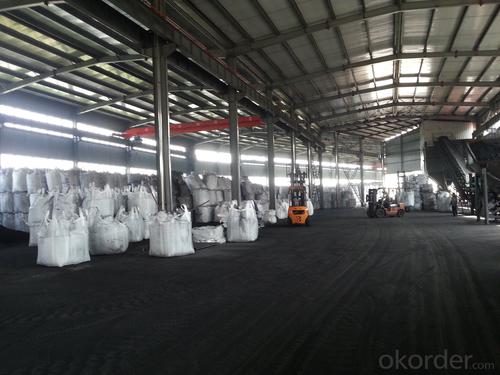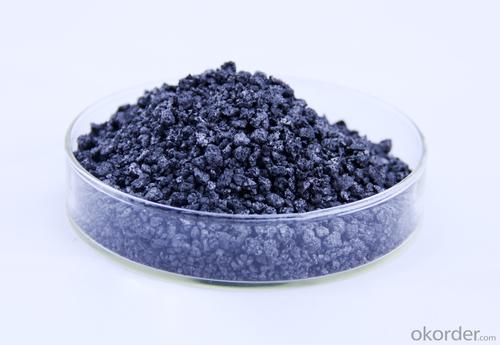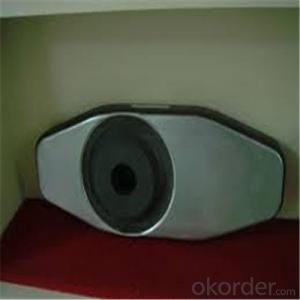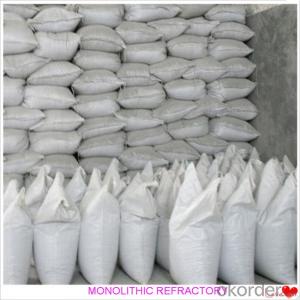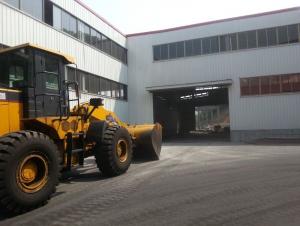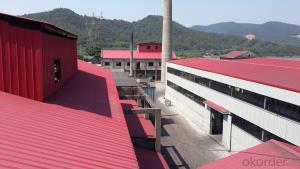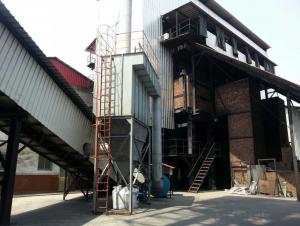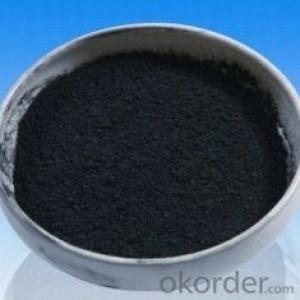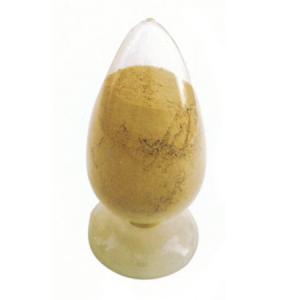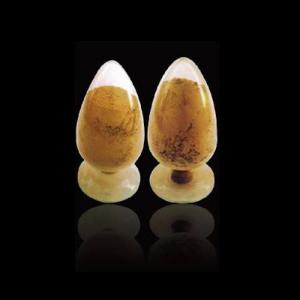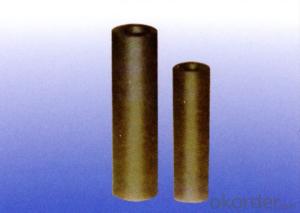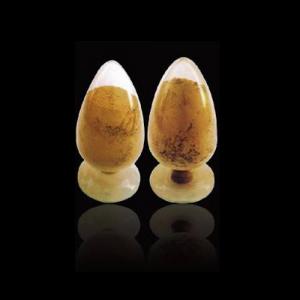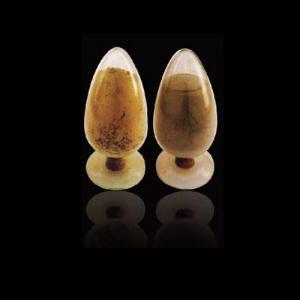Monolithic Refractories for Iron and Steel Industry - Calcined Petroleum Coke from Shanghai
- Loading Port:
- Shekou
- Payment Terms:
- TT OR LC
- Min Order Qty:
- 20 m.t
- Supply Capability:
- 1000 m.t/month
OKorder Service Pledge
OKorder Financial Service
You Might Also Like
Factory Background
The factory is majorly running and operating carbon additive (pitch coke, calcined petroleum coke and anthracite), low nitrogen carbon additive, and brake pad making material. Company is the long term supplier of Sinosteel Corporation, Shanghai Carbon Corporation, the plant of SGL Group the Carbon Company in China and some largest special carbon products producing plants.
YUAI also supplies huge amout of high quality carbon additive and graphite carbon additive to steel plants, foundries and ferrotungsten plants. YUAI has been assigned by BAO STEEL as the only organization for processing pitch coke for export purpose. The group’s major products are constantly exported to Japan, Korea, Malaysia, South East Asia countries, Europe and America, which receive praises by our consumers.
The group has invested numbers of calcinators in Anhui China to ensure the capability of producing and processing huge amount of carbon additive. Further investment is on process. According to the orders from customers, YUAI is able to processing and providing different specifications of carbon additive and other products. To provide best quality of products and to offer customers most satisfied service is YUAI’s operating objectives.
Calcined Petroleum Coke
FC:98.5%min,
S:0.5%max
A:0.8%max
V:0.7%max
Mositure:0.5%max
Size:1-5mm
This product is mainly used in steel-making and foundry. Calcined Petroleum Coke
Calcined Petroleum Coke comes from delayed coke which extracted from oil refinery. Although Calcined Petroleum Coke contains a little bit higher level of sulfur and nitrogen than pitch coke, the price advantage still makes it widely used during steel-making and founding as a kind of carbon additive/carburant.
Packaging & Delivery
Packaging Detail:25kg paper bag into 1t weaving bag 5kg, 10kg and 20kg weaving bag into 1t weaving bag 25kg weaving bag put on pallet covered with entanglement wrap product direct into packing bag 25kg paper bag put on pallet covered with entanglement Wrap 25kg weaving bag into 1t weaving bag.
Delivery Details: 7 days
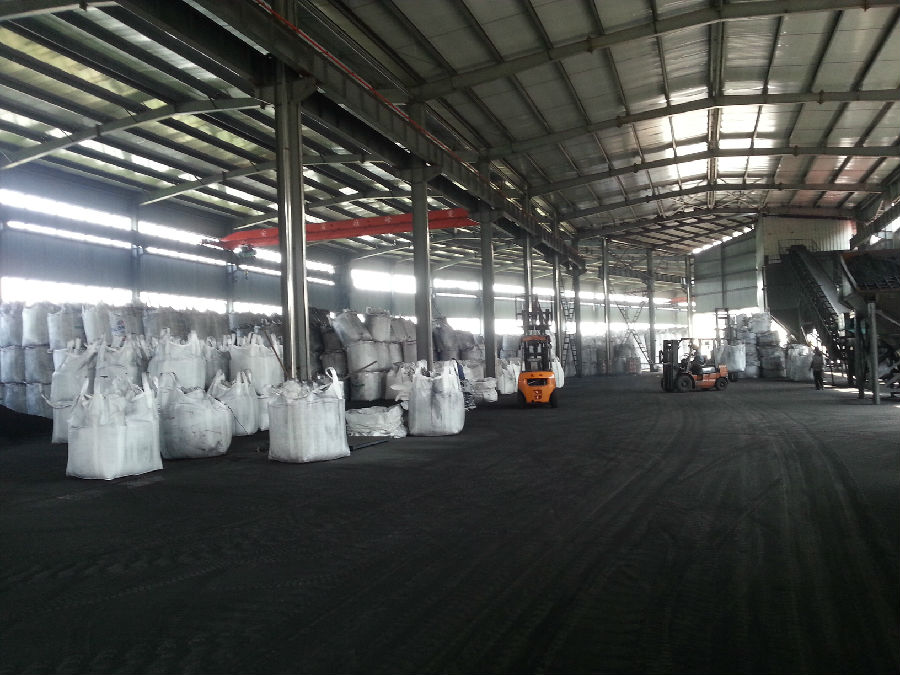
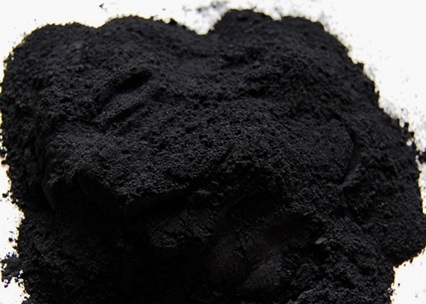
- Q: How do monolithic refractories withstand the corrosive environments in steelmaking processes?
- Due to their unique properties and composition, monolithic refractories are capable of enduring corrosive conditions in steelmaking processes. The primary feature of monolithic refractories is their exceptional ability to withstand high temperatures and thermal shock. Steelmaking procedures involve extremely high temperatures, which can reach up to 1700 degrees Celsius. Monolithic refractories are specifically engineered to endure these extreme temperatures without compromising their structural integrity. Moreover, monolithic refractories exhibit outstanding chemical resistance. The corrosive environments in steelmaking processes often include aggressive chemicals like molten metal, slag, and gases such as carbon monoxide and sulfur dioxide. Monolithic refractories are manufactured using materials that possess resistance to these chemicals. Consequently, these materials prevent any reactions and consequent corrosion. Furthermore, monolithic refractories possess a compact and uniform structure. This characteristic aids in preventing the infiltration of corrosive agents into the refractory material, further augmenting its resistance to corrosion. The compact structure also minimizes the formation of cracks and fissures, which can serve as pathways for corrosive agents to penetrate the refractory. Additionally, monolithic refractories are frequently composed of materials with high refractoriness, such as alumina, magnesia, and silica. These materials possess high melting points, rendering them more resistant to the extreme temperatures encountered in steelmaking processes. They also possess low thermal conductivity, which assists in reducing heat transfer and lowering the risk of thermal damage to the refractory. Lastly, monolithic refractories are often formulated with specific additives and binders that enhance their resistance to corrosion. These additives may include materials like zircon, chrome, or graphite, which provide supplementary protection against the corrosive environment. In conclusion, monolithic refractories demonstrate their ability to withstand the corrosive environments in steelmaking processes through their high resistance to temperature and thermal shock, excellent chemical resistance, dense and uniform structure, high refractoriness, and the utilization of specialized additives and binders. These attributes make monolithic refractories an optimal choice for enduring the rigorous conditions of steelmaking processes, ensuring the durability and efficiency of the refractory lining.
- Q: What are the main factors affecting the thermal expansion of monolithic refractories?
- The main factors affecting the thermal expansion of monolithic refractories include the chemical composition of the refractory material, the temperature at which it is exposed, and the rate at which it is heated or cooled. Other factors such as the presence of impurities, the porosity of the material, and the type of bonding agents used can also influence the thermal expansion behavior of monolithic refractories.
- Q: How do monolithic refractories contribute to the overall efficiency of ladle transfer processes?
- The efficiency of ladle transfer processes is greatly improved by the use of monolithic refractories. These refractories are made from a single, uniform material, making them easy to install and maintain. This feature reduces downtime during ladle transfers, ultimately increasing productivity. One of the ways in which monolithic refractories enhance efficiency is through their high thermal conductivity. Ladle transfers involve the movement of molten metal, which generates a significant amount of heat. Monolithic refractories have exceptional heat resistance, allowing them to withstand the extreme temperatures of the molten metal. This property prevents refractory failure and extends the lifespan of the ladle, resulting in more efficient and uninterrupted ladle transfer operations. Furthermore, monolithic refractories provide superior corrosion resistance. The corrosive nature of molten metal can cause considerable damage to ladles over time. However, monolithic refractories are specifically designed to withstand chemical attacks from molten metal, preventing the degradation of the ladle's integrity. Consequently, ladles lined with monolithic refractories have a longer lifespan and require less frequent replacement, leading to cost savings and improved efficiency. Another factor contributing to the efficiency of ladle transfer processes is the ability of monolithic refractories to conform to complex shapes and designs. Ladles come in various sizes and shapes, and monolithic refractories can be customized to perfectly fit the dimensions of the ladle. This precise fit minimizes heat loss and maximizes energy efficiency during ladle transfers. Additionally, monolithic refractories offer excellent mechanical strength and resistance to thermal shock. Ladle transfer processes involve the handling and movement of ladles, subjecting refractories to mechanical stresses. The exceptional mechanical properties of monolithic refractories ensure their durability and prevent cracking or spalling, reducing the risk of refractory failure and enhancing the efficiency of ladle transfer operations. In conclusion, the efficiency of ladle transfer processes is improved by the use of monolithic refractories due to their high thermal conductivity, corrosion resistance, precise lining fit, and excellent mechanical properties. These refractories enhance the durability of ladles, reduce downtime, and improve energy efficiency, resulting in cost savings and increased productivity in the steelmaking industry.
- Q: How are monolithic refractories used in the repair and maintenance of ladle and tundish linings?
- Monolithic refractories, widely utilized in the steel industry, are a specific type of refractory material employed for the repair and maintenance of ladle and tundish linings. These linings, integral to the transportation and treatment of molten metal during the steelmaking process, can deteriorate over time when exposed to high temperatures and corrosive conditions. This deterioration poses various issues, including heat loss, contamination of the molten metal, and reduced lifespan of the refractory lining. To tackle these problems, monolithic refractories serve as effective repair and maintenance materials. Typically composed of different refractory aggregates, binders, and additives, monolithic refractories are available in various forms like castables, gunning mixes, and ramming mixes. These materials are designed for easy application and shaping, conforming to the specific geometry and dimensions of the ladle or tundish lining. During the repair process, damaged sections of the lining are removed, and monolithic refractories are then applied. Castables can be poured and vibrated into place, while gunning mixes can be sprayed using a high-pressure gunning machine. On the other hand, ramming mixes are manually compacted into the lining using a ramming tool. Monolithic refractories offer several advantages when it comes to the repair and maintenance of ladle and tundish linings. Firstly, their flexibility ensures easy installation and shaping, resulting in a snug fit to the lining. This maximizes the effectiveness of the refractory lining in preventing heat loss and maintaining the integrity of the ladle or tundish. Secondly, monolithic refractories exhibit exceptional resistance to thermal shock and chemical attack. This durability enables them to withstand the harsh conditions encountered in ladles and tundishes. Even when subjected to repeated heating and cooling cycles, they remain intact without cracking or spalling, providing long-lasting protection to the lining. Lastly, monolithic refractories can be easily repaired and replaced as needed. The application and removal processes are relatively straightforward, facilitating efficient maintenance of ladle and tundish linings. This minimizes downtime and ensures the overall productivity of the steelmaking process. In conclusion, monolithic refractories play a vital role in the repair and maintenance of ladle and tundish linings. Their easy application, exceptional resistance to thermal shock and chemical attack, and ease of repair make them ideal materials for extending the lifespan and optimizing the performance of these linings in the steel industry.
- Q: How do monolithic refractories protect the lining of ladles and tundishes?
- Monolithic refractories protect the lining of ladles and tundishes by forming a strong and durable barrier against high temperatures, chemical reactions, and mechanical stresses. These refractories are designed to be resistant to thermal shock and erosion, ensuring that the lining remains intact and unaffected by the molten metal or slag. They also provide insulation, minimizing heat loss and reducing energy consumption. Overall, monolithic refractories act as a reliable shield, extending the lifespan of the ladles and tundishes and preventing any detrimental effects on the lining.
- Q: How do monolithic refractories resist thermal shock in the iron and steel industry?
- Monolithic refractories are specifically designed to resist thermal shock in the iron and steel industry. This is primarily achieved through their unique composition and structure. Firstly, monolithic refractories are made from high-quality raw materials, such as alumina, magnesia, and silica, which have excellent thermal properties. These materials are carefully selected to provide a high melting point, low thermal conductivity, and good thermal expansion characteristics. Secondly, the manufacturing process of monolithic refractories involves precise control of the grain size distribution and the addition of bonding agents. This results in a dense and homogeneous structure, which enhances their resistance to thermal shock. The bonding agents also play a crucial role in enhancing the refractory's strength and integrity. Additionally, monolithic refractories are often formulated with additives that provide increased resistance to thermal shock. These additives can include zirconia, silicon carbide, or graphite, which improve the refractory's ability to withstand rapid temperature changes. Moreover, monolithic refractories are designed to have low porosity, reducing the penetration of molten metal or slag into the material. This helps to prevent the formation of cracks and spalling, which can occur due to thermal shock. Furthermore, monolithic refractories are often applied as a lining or coating on the surface of the furnace or other equipment. This allows them to form a protective barrier, reducing direct exposure to extreme temperatures and thermal cycling. Overall, the combination of high-quality raw materials, careful manufacturing processes, additives, low porosity, and proper application techniques make monolithic refractories highly resistant to thermal shock in the iron and steel industry. They can withstand rapid temperature changes, prevent cracks, and maintain their structural integrity, ensuring reliable and efficient operation of furnaces and other equipment in this demanding industry.
- Q: How do monolithic refractories perform in reheating furnace roof applications?
- Monolithic refractories prove highly effective when used on the roofs of reheating furnaces. These refractories are renowned for their outstanding ability to withstand extreme temperature conditions, making them an essential component in furnace operations. Their resistance to thermal shock ensures that they do not crack or spall, guaranteeing the long-lasting durability of the furnace roof. Moreover, monolithic refractories offer exceptional insulation properties, thereby helping to maintain the desired temperature inside the furnace. With their low thermal conductivity, they prevent heat loss and reduce energy consumption. This not only enhances the energy efficiency of the furnace but also leads to cost savings for operators. Furthermore, monolithic refractories provide excellent resistance against chemical attacks from gases and molten metals found within the furnace environment. Designed to withstand corrosive atmospheres, they effectively prevent the penetration of harmful substances, thereby extending the lifespan of the roof refractory. Additionally, monolithic refractories offer easy installation and repair options. Their ability to be cast or gunned in place allows for a seamless and precise application to the roof structure. This feature also facilitates quick and efficient repairs or maintenance, minimizing downtime and production losses. In summary, monolithic refractories are a reliable and efficient choice for reheating furnace roof applications. Their outstanding resistance to thermal shock, insulation properties, chemical resistance, and ease of installation make them the ideal solution for maintaining the structural integrity and performance of the furnace roof.
- Q: What are the factors affecting the thermal expansion of monolithic refractories?
- The factors affecting the thermal expansion of monolithic refractories are the composition of the refractory material, the temperature gradient, and the firing or curing process.
- Q: How do monolithic refractories contribute to the reduction of downtime in iron and steel plants?
- Monolithic refractories play a crucial role in reducing downtime in iron and steel plants due to their unique properties and applications. These refractories are composed of a single, uniform material, making them highly versatile and easier to install compared to traditional brick refractories. Firstly, monolithic refractories offer excellent thermal insulation, which helps to prevent heat loss and maintain high temperatures in various areas of the plant. This insulation capability reduces the need for frequent repairs and replacements, as it minimizes thermal stress and prolongs the lifespan of equipment and furnaces. This, in turn, results in less downtime required for maintenance and repair work. Secondly, monolithic refractories exhibit superior resistance to thermal shock. The extreme temperatures experienced in iron and steel plants can cause rapid and significant temperature changes, leading to the cracking and failure of refractory linings. However, monolithic refractories have better thermal shock resistance, enabling them to withstand sudden temperature fluctuations without sustaining damage. This property enhances their durability and contributes to the reduction of downtime. Moreover, monolithic refractories offer enhanced mechanical strength and chemical resistance, making them suitable for the harsh operating conditions in iron and steel plants. These refractories can withstand the erosive effects of molten metal, slag, and other corrosive materials, ensuring the longevity of equipment and reducing the frequency of maintenance interventions. Additionally, the installation process of monolithic refractories is faster and more efficient compared to brick refractories. They can be easily applied using various techniques, such as shotcreting or gunning, allowing for quick repairs or renovations during planned shutdowns or even emergency situations. The reduced installation time results in shorter downtime periods, enabling the plant to resume operations promptly. In conclusion, monolithic refractories significantly contribute to the reduction of downtime in iron and steel plants through their excellent thermal insulation, resistance to thermal shock, mechanical strength, and chemical resistance. Their ease of installation and quick repair capabilities further enhance their role in minimizing downtime and ensuring uninterrupted production in these critical industries.
- Q: How do monolithic refractories contribute to the overall efficiency of ladle cleaning operations?
- Enhancing the overall efficiency of ladle cleaning operations is a crucial role played by monolithic refractories. Composed of a single, homogeneous structure, these refractory materials offer several key advantages that contribute to improved efficiency. To begin with, monolithic refractories possess exceptional thermal insulation properties. This means they can withstand high temperatures without cracking or deteriorating, thereby allowing for more efficient and effective ladle cleaning operations. By consistently maintaining a specific temperature, these refractories minimize heat loss and ensure uninterrupted and timely completion of the cleaning process. Furthermore, monolithic refractories exhibit high resistance to chemical attacks. In steelmaking processes, ladles often come into contact with aggressive molten metals and slag that can erode and corrode the refractory lining. However, monolithic refractories are designed specifically to endure these harsh conditions, providing a longer service life and reducing the need for frequent repairs or replacements. This not only saves time but also reduces the overall cost of ladle maintenance. In addition, monolithic refractories possess excellent flowability and workability. They can be easily shaped and installed in the ladle lining, enabling quick and precise application. This ease of installation results in shorter downtime during ladle cleaning operations, as the refractory lining can be swiftly repaired or replaced. Moreover, the flowability of monolithic refractories ensures better coverage and adherence to the ladle's surface, leaving no gaps or weak points. This enhances the overall effectiveness of the cleaning process and prevents potential contamination or reactivity issues. In conclusion, monolithic refractories significantly contribute to the overall efficiency of ladle cleaning operations by providing exceptional thermal insulation, high resistance to chemical attacks, and easy workability. These properties lead to reduced downtime, increased durability, and cost savings, making monolithic refractories a vital component in optimizing ladle cleaning processes.
Send your message to us
Monolithic Refractories for Iron and Steel Industry - Calcined Petroleum Coke from Shanghai
- Loading Port:
- Shekou
- Payment Terms:
- TT OR LC
- Min Order Qty:
- 20 m.t
- Supply Capability:
- 1000 m.t/month
OKorder Service Pledge
OKorder Financial Service
Similar products
Hot products
Hot Searches
Related keywords
